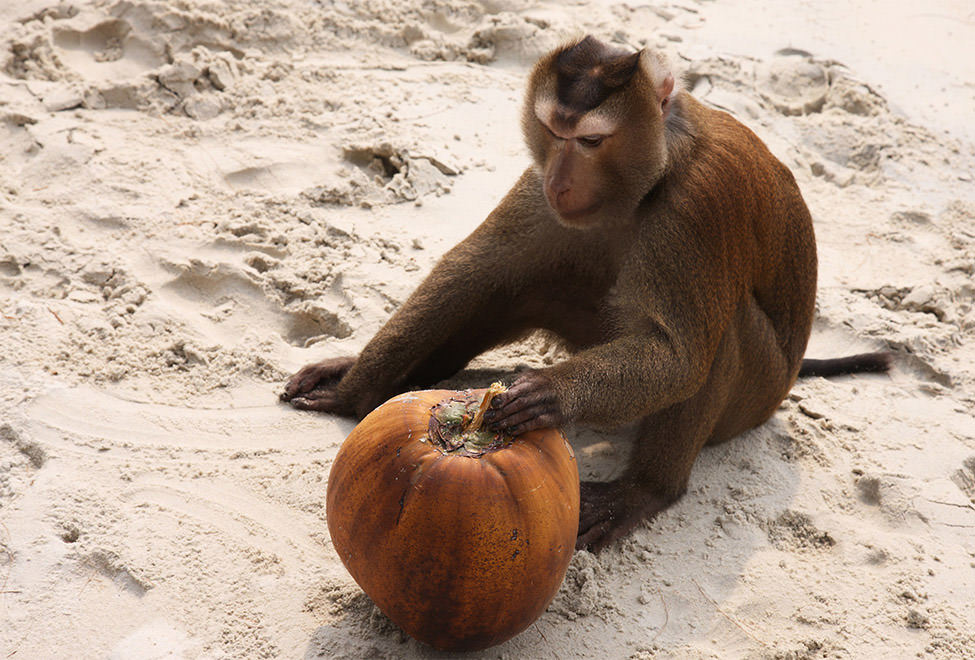The Monkey and the Coconuts

On 9 October, 1926, a puzzle concerning sailors, coconuts and a
monkey was published in the American magazine, the Saturday Evening Post.
It was in a short story contributed by the American writer, Ben Ames
Williams. It is a good story and I recommend you
read the
story in full here.
This is an extract from the story which explains the the puzzle. Both the
accountant, Wadlin, and the contractor, Marr, are mathematics nuts [pun!] and
Wadlin has a business motive in showing Marr the puzzle.
So at last Wadlin told him. “Well,” he explained, “ according to the way the thing was given to me, five men and a monkey were shipwrecked on a desert island, and they spent the first day gathering coconuts for food. Piled them all up together and then went to sleep for the night.
But when they were all asleep one man woke up, and he thought there might be a row about dividing the coconuts in the morning, so he decided to take his share. So he divided the coconuts into five piles. He had one coconut left over, and he gave that to the monkey, and he hid his pile and put the rest all back together.”
He looked at Marr; the man was listening attentively. “So by and by the next man woke up and did the same thing,” Wadlin continued. “And he had one left over, and he gave it to the monkey. And all five of the men did the same thing, one after the other, each one taking a fifth of the coconuts in the pile when he woke up, and each one having one left over for the monkey. And in the morning they divided what coconuts were left, and they came out in five equal shares.”
He added morosely, “Of course each one must have known there were coconuts missing; but each one was guilty as the others, so they didn’’t say anything.”
Marr asked sharply, “But what’s the question?”
“How many coconuts were there in the beginning?” Wadlin meekly explained.
When this puzzle was first devised there was a spare coconut after the final division in the morning which was also given to the monkey. The answer to this version is 15,621 coconuts. This seems improbable for five men even working a long tropical day. By simply altering the story slightly, Williams produced a puzzle with a far more practical number of coconuts in the solution.
The magazine Scientific American had a monthly column called Mathematical Games, edited by the famous recreational mathematician, Martin Gardner. The puzzle of the Monkey and the Coconuts was presented in his column in April 1958.
I have given the solution on a new page so that, if you want, you can print out the puzzle and the solution separately and only look at the solution if you are really stumped. It can be worked out using High School algebra and a bit of thought.
